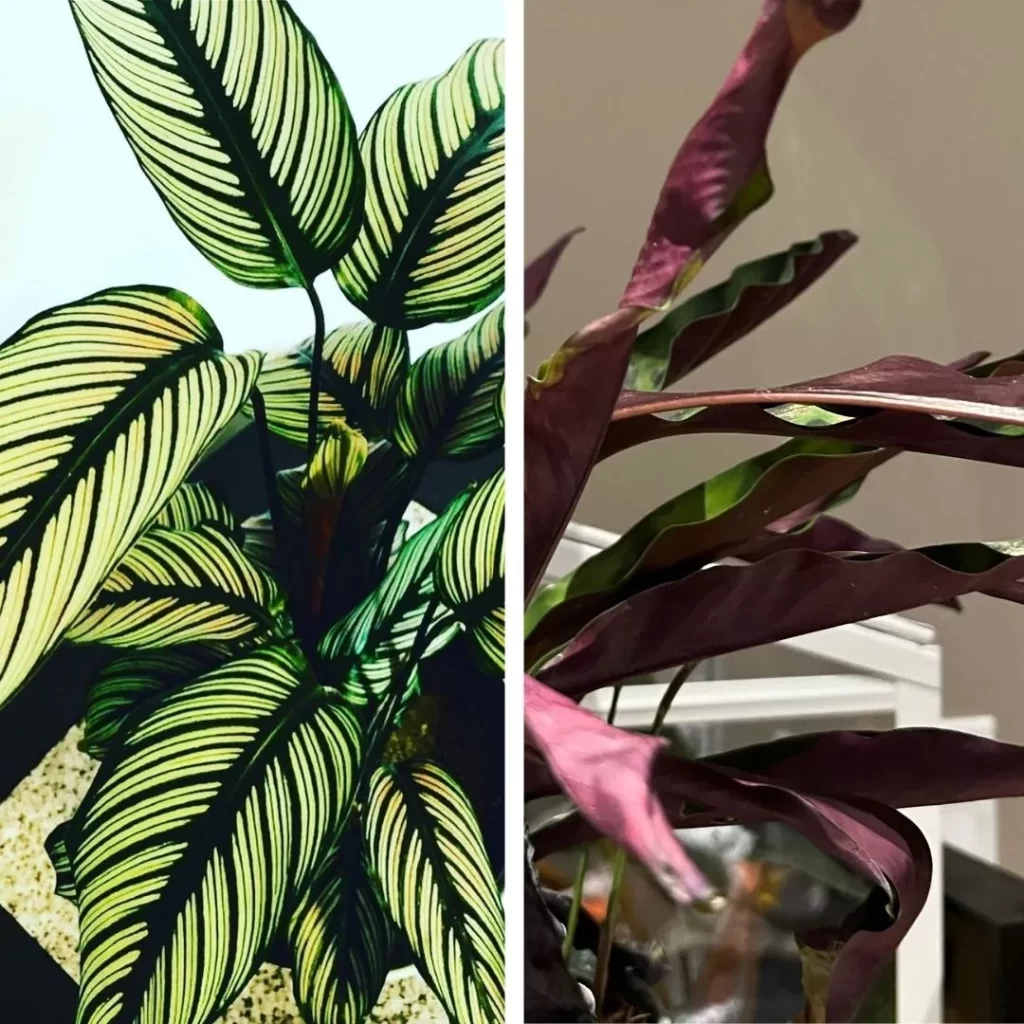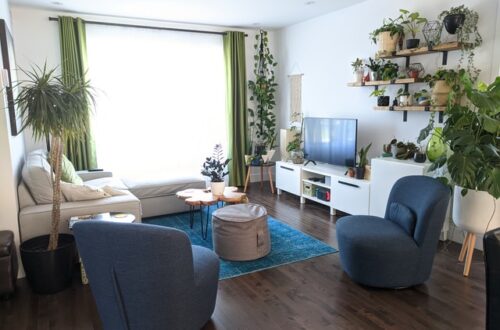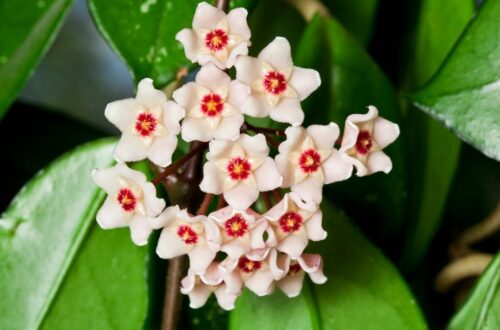
Why are Calatheas Difficult to Grow? (Complete Growing Guide)
Has this happened to you? You see a Calathea in the store and your jaw drops. The foliage, the colors, the structure is undeniably stunning. You’re not really sure what this plant is, but you decide to scoop it up anyway and take it home. How bad can it be?
Then it dies.
What did you do wrong? You look the plant up online and you see all of the memes, the jokes, and the frustrations. Other plant owners start telling you just how darn difficult Calatheas are to grow. But why are Calatheas difficult? Can you still grow them?
Calatheas are difficult to grow as houseplants, because the average household does not compare to the warm, moist tropical climates where they grow naturally. They prefer warm temperatures, high humidity, moist (but not wet) soil, untreated water and medium light levels. They are also very susceptible to pest infestations and fungal diseases that cause yellow and brown leaves.
If you want to grow happy Calatheas, you will have to modify your environment so it is similar to one where Calatheas typically thrive. We’ll take a look at why Calatheas are difficult to grow and give you tips so you can enjoy these beauties without turning your whole upside down to care for them.
A Calathea’s Natural Habitat
Calatheas are native to tropical, Latin America but have also been introduced in Hawaii. You can find many species of Calathea growing in areas like Brazil, Colombia, Guatemala, Peru, Jamaica and many other areas. They have many practical uses; there large leaves have been used to hold items or wrap food for transport and they have even been used as rice containers. They’re also food for many native herbivores. Calatheas grow along the understory of the tropical forest. There, they receive dappled sunlight, warm temperatures, plenty of moisture and high humidity levels under the dome of other tropical plants.
Calathea’s structure
Calatheas are upright plants with either long or rounded foliage that is thin, delicate and ornamental. Like many plants, Calatheas have a process known as transpiration, where water vapour is excreted through pores in the leaves. New growth emerges at the center of the plant and the old, outer growth eventually shrinks and dies back.
Why are Calatheas Difficult?
It’s important to understand the growth structure along with their natural habitat to understand why Calatheas are so difficult to grow as houseplants. As you can imagine, the average household has much drier, darker and more variable conditions from their home in the tropics. Consequently, those large but thin and ornate leaves can be their detriment. This plant is not adapted to survive in this new environment. Giving your Calathea those replicated tropical conditions takes effort, if you even know that is what is wrong in the first place. As a result, there are many crispy, dead Calatheas and broken hearted or frustrated plant owners.

Why are Calatheas Fussy?
So what exactly is it that Calatheas are fussy about in our homes? There are a few characteristics about Calathea that make them especially difficult.
They need high humidity
Calatheas have incredibly thin foliage, so they need a constant replenishment of moisture while their leaves are losing that water vapour. Without humidity levels above 60%, you may notice their leaves start to develop brown, crispy tips and edges. This is their way of reducing the surface area of the leaf itself to decrease the moisture from leaving the plant. Those crispy tips of course can be very unsightly and take away from the reason you likely bought your Calathea in the first place – for the beautiful foliage.
They need warm temperatures
A cold spell can be the end of your Calathea. In the wild, they live close to the equator and experience very little variation in temperatures. This means that keeping your Calathea in a cold room, near a drafty window, an air conditioner, in a cold car, or even exposing them to temperature extremes while shipping, moving or transporting them can be fatal. Calatheas are highly susceptible to cold damage or shock from extreme temperatures. They need temperatures in the 65F-85F range (18C-30C).
I’ve found similar struggles keeping them in extreme heat conditions. I’d suggest not keeping your Calathea outdoors in the summer if you tend to get heatwaves as this can also result in shock and distress.
They need moist (but not wet) soil
Under the forest floor, Calatheas have access to endless moisture and rarely worry about their soil drying out or long periods of drought. Unlike more succulent plants that are able to store water reverses in their foliage, Calatheas have that thin, delicate foliage which will dry out and become crispy quite quickly when living in dry soil.
However, it is a bit of a goldilocks situation. You cannot give your Calathea water every single day since no plant is immune to the dreaded root rot. If your Calathea is living in soaking wet soil, the roots will become deprived of oxygen and will start to form lesions. This allows bacteria, fungus and anything else living in the soil to infect the plant. You want a happy medium: keep the soil moist but never dry or wet.
Calatheas are very sensitive to chemicals and minerals
When you get a Calathea, you may learn quickly that not all water is good water. Calatheas do not like tap water, particularly if it has been treated with minerals like fluoride or chlorine. As you may have guessed, these plants do not receive that type of water in the wild and the result is more crispy tips on its leaves. They prefer rainwater or filtered tap water at room temperature (never cold).
Calatheas are also incredibly sensitive to fertilizer burn. They will develop black, crispy tips if they receive too much of it. I always avoid fertilizing my Calatheas for the first year that I have them since they likely have received plenty of fertilizer at the garden centers. When I do introduce fertilizer, make sure it is heavily diluted and opt for a gentle, soil enhancer wherever possible. If you bring your Calathea home and notice a surplus of those slow-release fertilizer beads in the pot, remove and discard them if you can. Sometimes Calatheas can be over-fertilized at the garden center (often not maliciously) and this will save you from damaged leaves in the future.
They have specific light requirements
Speaking of goldilocks, Calatheas are also picky about their light requirements too. Calatheas are well protected along the forest floor, which means that they get access to filtered light. Too much light will burn the foliage and even cause their ornate leaf patterns to fade, while too little light puts them at risk of overwatering and root rot since light is key for photosynthesis. Ideally, you want to give your Calatheas between 200-400 Foot Candles of light, which works out to medium light levels.
Calatheas are pest magnets
Pests enjoy houseplants that are under stress, and we all know it doesn’t take much for a Calathea to feel stressed. Their tender foliage is equally delicious for all varieties of pests, but thrips and spider mites are two very common ones that unfortunately can do a ton of damage to the plant.
Fungal infections
Many people see brown patches on the leaves and assume that it is a watering issue. And while watering issues and humidity are the main cause for Calatheas developing brown tips and outer edges of the leaf, inner brown patches is another issue. This is a sign of leaf spot fungus, which is incredibly common with Calatheas. Fungal spots are often caused by a surplus of moisture on the plant tissue and a lack of airflow. Fungi spores are naturally airborne, but they can access your plant via lesions in the leaf. This can happen if water is pooling on the leaf itself. You can treat fungal infections with a fungicide and prevent the majority of infections by preventing prolonged stagnant water from sitting on the leaf.
How to simplify Calathea Care?
So how that you know why Calatheas are so difficult, is it possible to still have them thriving in your home? Absolutely! I have gotten my Calathea care down to a science, and there are ways to keep happy Calathea without turning your entire home into a tropical forest…unless you want to do that!
My suggestions to Simplify Difficult Calatheas:
- Get a humidifier. It is the most efficient way to get a constant stream of humidity.
- Use filtered or rain water: I have also seen people water their Calatheas with discarded freshwater fish tank water and found success there. Use filtered water for your humidifier as well.
- Check your Calathea for pests regularly: it also helps to treat your Calathea for pests once monthly even if you don’t see any visible pests.
- Keep it closer to an Eastern-facing window or pulled back substantially (5+ feet) from a Western or Southern-facing window.
- Once you have found your Calathea a home, leave it be. Try not to change its environment too drastically and only repot it when absolutely necessary.
- If you notice a fungal spot on your Calathea leaf, treat the entire plant with fungicide and trim that fungal spot. This will prevent new spots from forming and spreading.
For more tips on growing beautiful Calathea, check out my secrets here!



